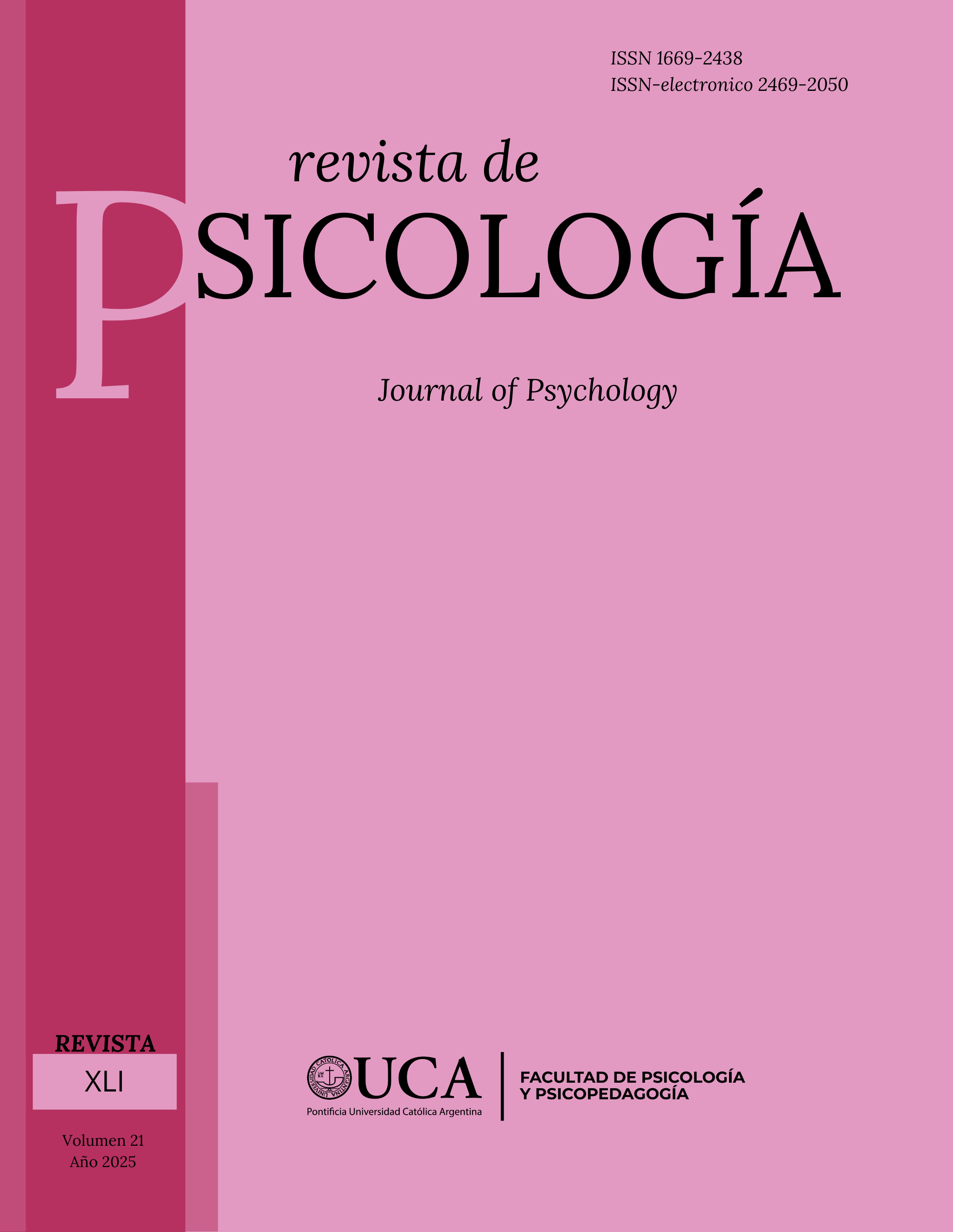Working Memory: Clinical Considerations and Experimental Approaches
DOI:
https://doi.org/10.46553/RPSI.21.41.2025.p100-112Keywords:
Working memory, Executive functions, Ventral Striatum, Nucleus Accumbens Septi, Glutamate, Schizophrenia, Translational researchAbstract
The study of working memory is part of that of executive functions. These capacities point to the realization of final purposes. Here we analyse memory as a psychic instance, and we review the path followed to delimit the concept and construct of working memory in this framework. We briefly analyse the alterations of these functions in schizophrenic psychoses, and in the most frequent addictions to drugs of abuse. We briefly recall translational models for the study of alterations in working memory. Finally, we refer to the translational model of working memory proposed by us, its projection on schizophrenic psychoses and the proposed cerebral substrate. Recently, the study of psychoses has been developed through translational studies in experimental animals. The link between drugs of addiction or misuse with psychoses has favoured the development of translational models. In this review, an impaired function in schizophrenic psychoses is linked to a neurotransmission system and a brain nucleus in a translational model. In this experimental way, a physiopathogenesis is assigned here to this disorder present in schizophrenic psychoses, linking it to the ventral striatum or Nucleus Accumbens Septi and to its glutamatergic transmission.
Downloads
References
Arias Horcajadas, F., Dávila Píriz, J. R., Parra González, A., Sánchez Romero, S., Sánchez-Morla, E., Ampuero Sánchez, I., & Ramos Atance, J. A. (2023). Cannabinoid receptor type 2 gene is associated with comorbidity of schizophrenia and cannabis dependence and fatty acid amide hydrolase gene is associated with cannabis dependence in the Spanish population. Adicciones, 35(1), 33-46. https://doi.org/10.20882/adicciones.1587
Atkinson, R. C. & Shiffrin, R. M. (1968). Human Memory: A Proposed System and its Control Processes. En K. W. Spence & J. T. Spence (Eds.), Psychology of Learning and Motivation. Advances in Research and Theory (Vol. 2, pp. 89-195). Academic Press. https://doi.org/10.1016/S0079-7421(08)60422-3
Atkinson, R. C. & Shiffrin, R. M. (1971). The control of short-term memory. Scientific American, 225(2), 82–90. https://doi.org/10.1038/scientificamerican0871-82
Baiardi, G., Ruiz, A. M., Beling, A., Borgonovo, J., Martínez, G., Landa, A. I., Sosa, M. A., & Gargiulo, P. A. (2007). Glutamatergic ionotropic blockade within accumbens disrupts working memory and might alter the endocytic machinery in rat accumbens and prefrontal cortex. J Neural Transm (Vienna), 114(12), 1519-1528. https://doi.org/10.1007/s00702-007-0776-7
Baddeley, A. D. (1992). Working memory. Science, 255(5044), 556-559. https://doi.org/10.1126/science.1736359
Baddeley, A. D. (2021). Developing the Concept of Working Memory: The Role of Neuropsychology. Arch Clin Neuropsychol, 36(6), 861-873. https://doi.org/10.1093/arclin/acab060
Baddeley, A. & Hitch, G. (1974). Working memory. En G. A. Brower, The psychology of learning and motivation (vol. 8, pp. 47-89). Academic Press. https://doi.org/10.1016/S0079-7421(08)60452-1
Ballesteros, S. (2014). La atención selectiva modula el procesamiento de la información y la memoria implícita. Acción Psicológica, 11(1), 7-20. https://doi.org/10.5944/ap.11.1.13788
Berg, E. A. (1948). A simple objective technique for measuring flexibility in thinking. The Journal of General Psychology, 39(1), 15-22. https://doi.org/10.1080/00221309.1948.9918159
Blair, C. (2017). Educating executive function. Wiley Interdisciplinary Reviews Cognitive Science, 8(1-2), e1403. https://doi.org/10.1002/wcs.1403
Craik, F. I. M. & Lockhart, R. S. (1972). Levels of processing: A framework for memory research. Journal of Verbal Learning and Verbal Behavior, 11(6), 671-684. https://doi.org/10.1016/S0022-5371(72)80001-X
Cristofori, I., Cohen-Zimerman, S., & Grafman, J. (2019). Executive functions. Handbook of Clinical Neurology (vol. 163, pp. 197-219). https://doi.org/10.1016/B978-0-12-804281-6.00011-2
D'Souza, D. C., DiForti, M., Ganesh, S., George, T. P., Hall, W., Hjorthøj, C., Howes, O., Keshavan, M., Murray, R. M., Nguyen, T. B., Pearlson, G. D., Ranganathan, M., Selloni, A., Solowij, N., & Spinazzola, E. (2022). Consensus paper of the WFSBP task force on cannabis, cannabinoids and psychosis. The World Journal of Biological Psychiatry, 23(10), 719-742. https://doi.org/10.1080/15622975.2022.2038797
Dudchenko, P. A. (2004). An overview of the tasks used to test working memory in rodents. Neuroscience & Biobehavioral Reviews, 28(7), 699-709. https://doi.org/10.1016/j.neubiorev.2004.09.002
Emond, V., Joyal, C., & Poissant, H. (2009). Neuroanatomie structurelle et fonctionnelle du trouble déficitaire d'attention avec ou sans hyperactivité (TDAH) [Structural and functional neuroanatomy of attention-deficit hyperactivity disorder (ADHD)]. L’Encéphale, 35(2), 107-114. https://doi.org/10.1016/j.encep.2008.01.005
Ferretti, V., Sargolini, F., Oliverio, A., Mele, A., Roullet, P. (2007). Effects of intra-accumbens NMDA and AMPA receptor antagonists on short-term spatial learning in the Morris water maze task. Behavioral Brain Research, 179(1), 43-49. https://doi.org/10.1016/j.bbr.2007.01.009
Fiske, A. & Holmboe, K. (2019). Neural substrates of early executive function development. Developmental Review, 52, 42-62. https://doi.org/10.1016/j.dr.2019.100866
Friedman, D., Nessler, D., Johnson, R., Jr., Ritter, W., & Bersick, M. (2007). Age-related changes in executive function: an event-related potential (ERP) investigation of task-switching. Aging Neuropsychology and Cognition, 15(1), 95-128. https://doi.org/10.1080/13825580701533769
Friedman, N. P. & Miyake, A. (2017). Unity and diversity of executive functions: Individual differences as a window on cognitive structure. Cortex, 86, 186-204. https://doi.org/10.1016/j.cortex.2016.04.023
Gargiulo, P. Á. & Landa De Gargiulo, A. I. (2014). Glutamate and modeling of schizophrenia symptoms: review of our findings: 1990-2014. Pharmacological Reports, 66(3), 343-52. https://doi.org/10.1016/j.pharep.2014.03.010
Grace, A. A. (2000). Gating of information flow within the limbic system and the pathophysiology of schizophrenia. Brain Research Review, 31(2-3), 330-341. https://doi.org/10.1016/s0165-0173(99)00049-1
Hartman, M., Steketee, M. C., Silva, S., Lanning, K., & Andersson, C. (2003). Wisconsin Card Sorting Test performance in schizophrenia: the role of working memory. Schizophrenia Research, 63(3), 201-217. https://doi.org/10.1016/s0920-9964(02)00353-5
Huang, L.-C., Lin, S.-H., Tseng, H.-H., Chen. K. C., Abdullah, M., & Yang, Y. K. (2023). Altered glutamate level and its association with working memory among patients with treatment-resistant schizophrenia (TRS): a proton magnetic resonance spectroscopy study. Psychological Medicine, 53(7), 3220–3227. https://doi.org/10.1017/S003329172100533X
Kebir, O. & Tabbane, K. (2008). La mémoire de travail dans la schizophrénie: revue de la littérature [Working memory in schizophrenia: a review]. L’Encéphale, 34(3), 289-298. https://doi.org/10.1016/j.encep.2006.12.008
Kent, P. L. (2016). Working Memory: A Selective Review. Applied Neuropsycholy: Child, 5(3), 163-72. https://doi.org/10.1080/21622965.2016.1167491
Kirschmann, E. K., Pollock, M. W., Nagarajan, V., Torregrossa, M. M. (2017). Effects of Adolescent Cannabinoid Self-Administration in Rats on Addiction-Related Behaviors and Working Memory. Neuropsychopharmacology, 42(5), 989-1000. https://doi.org/10.1038/npp.2016.178
Kirschmann, E. K., Pollock, M. W., Nagarajan, V., Torregrossa, M. M. (2019). Development of working memory in the male adolescent rat. Developmental Cognitive Neurosciense, 37, 100601. https://doi.org/10.1016/j.dcn.2018.11.003
Klatzky, R. L. (1980). Human Memory: Structures and Processes (2da edición). Freeman.
Lopera Restrepo, F. (2008). Funciones Ejecutivas: Aspectos Clínicos. Revista Neuropsicología, Neuropsiquiatría y Neurociencias (Revista NNN), 8(1), 59-76. http://revistaneurociencias.com/index.php/RNNN/article/view/222
López, M. (2011). Working memory and learning: Contributions of Neuropsychology. Cuadernos de Neuropsicología, 5(1), 25-47. http://www.cnps.cl/index.php/cnps/article/view/115
Luria, A. R. (1968). The mind of a Mnemonist. Basic Books.
Malmberg, K. J., Raaijmakers, J. G. W., & Shiffrin, R. M. (2019). 50 years of research sparked by Atkinson and Shiffrin (1968). Memory & Cognition, 47(4), 561-574. https://doi.org/10.3758/s13421-019-00896-7
McCarthy, R. A. & Warrington, E. K. (1990). Cognitive Neuropsychology: A clinical introduction (pp. 275-295). Academic Press.
Mestrović, A. H., Palmović, M., Bojić, M., Treselj, B., & Nevajda, B. (2012). Electrophysiological correlates activated during the Wisconsin Card Sorting Test (WCST). Collegium Antropologicum, 36(2),513-520.
Miller, E. K. & Cohen, J. D. (2001). An integrative theory of prefrontal cortex function. Annual Review of Neuroscience, 24, 167-202. https://doi.org/10.1146/annurev.neuro.24.1.167
Miyake, A. & Friedman, N. P. (2012). The Nature and Organization of Individual Differences in Executive Functions: Four General Conclusions. Current Directions in Psychological Science, 21(1), 8-14. https://doi.org/10.1177/0963721411429458
Miyake, A., Friedman, N. P., Emerson, M. J., Witzki, A. H., Howerter, A., & Wager, T. D. (2000). The unity and diversity of executive functions and their contributions to complex "Frontal Lobe" tasks: a latent variable analysis. Cognitive Psychology, 41(1), 49-100. https://doi.org/10.1006/cogp.1999.0734
Niendam, T. A., Laird, A. R., Ray, K. L., Dean, Y. M., Glahn, D.C., & Carter, C. S. (2012). Meta-analytic evidence for a superordinate cognitive control network subserving diverse executive functions. Cognitive, Affective, & Behavioral Neuroscience, 12(2), 241-268. https://doi.org/10.3758/s13415-011-0083-5
Ochoa Angrino, S. & Cruz Panesso, I. (2007). Wisconsin Card Sorting Test en el estudio del déficit de atención con hiperactividad, trastornos psiquiátricos, autismo y vejez. Universitas Psychologica, 6(3), 637-648. http://www.scielo.org.co/scielo.php?script=sci_arttext&pid=S1657-92672007000300015&lng=en&tlng=es.
Papalia, D. E. & Wendkos-Olds, S. (1987). Psicología (pp. 205-243). McGraw-Hill.
Park, S. & Gooding, D. C. (2014). Working memory impairment as an endophenotypic marker of a schizophrenia diathesis. Schizophrenia Research: Cognition, 1(3), 127-136. https://doi.org/10.1016/j.scog.2014.09.005
Peterson, L. & Peterson, M. J. (1959). Short-term retention of individual verbal items. Journal of Experimental Psychology, 58(3), 193-198. https://doi.org/10.1037/h0049234
Repovš, G. & Baddeley, A. (2006). The multi-component model of working memory: explorations in experimental cognitive psychology. Neuroscience, 139(1), 5-21. https://doi.org/10.1016/j.neuroscience.2005.12.061
Schacter, G. B., Yang, C. R., Innis, N. K., & Mogenson, G. J. (1989). The role of the hippocampal-nucleus accumbens pathway in radial-arm maze performance. Brain Research, 494(2), 339-49. https://doi.org/10.1016/0006-8993(89)90602-1
Scheel-Kruger, J. & Willner, P. (1991). The mesolimbic system: Principles of operation. En P. Willner & J. Scheel-Kruger (Eds.), The mesolimbic dopamine system: from motivation to action (pp.559-597). Wiley.
Schroeder, U., Schroeder, H., Schwegler, H., & Sabel, B. A. (2000). Neuroleptics ameliorate phencyclidine-induced impairments of short-term memory. British Journal of Pharmacology, 130(1):33-40. https://doi.org/10.1038/sj.bjp.0703171
Sperling, G. (1960). The information available in brief visual presentations. Psychological Monographs: General and Applied, 74(11), 1-29. https://doi.org/10.1037/h0093759
Vallejo-Reyes, F. (2019). Evaluación de la Función Ejecutiva en Usuarios con Dependencia de Pasta Base de Cocaína Mediante una Batería Neuropsicológica. Psykhe, 28(1), 1-17. https://doi.org/10.7764/psykhe.28.1.1111
Verdejo-García, A. & Bechara, A. (2010). Neuropsicología de las funciones ejecutivas. Psicothema, 22(2), 227-235. https://www.psicothema.com/pdf/3720.pdf
Wilson, J., Freeman, T. P., & Mackie, C. J. (2019). Effects of increasing cannabis potency on adolescent health. The Lancet Child & Adolescent Health, 3(2), 121-128. https://doi.org/10.1016/S2352-4642(18)30342-0
Downloads
Published
How to Cite
Issue
Section
License
Copyright (c) 2025 Pascual Ángel Gargiulo, Adriana Inés Landa de Gargiulo

This work is licensed under a Creative Commons Attribution-NonCommercial-ShareAlike 4.0 International License.



















